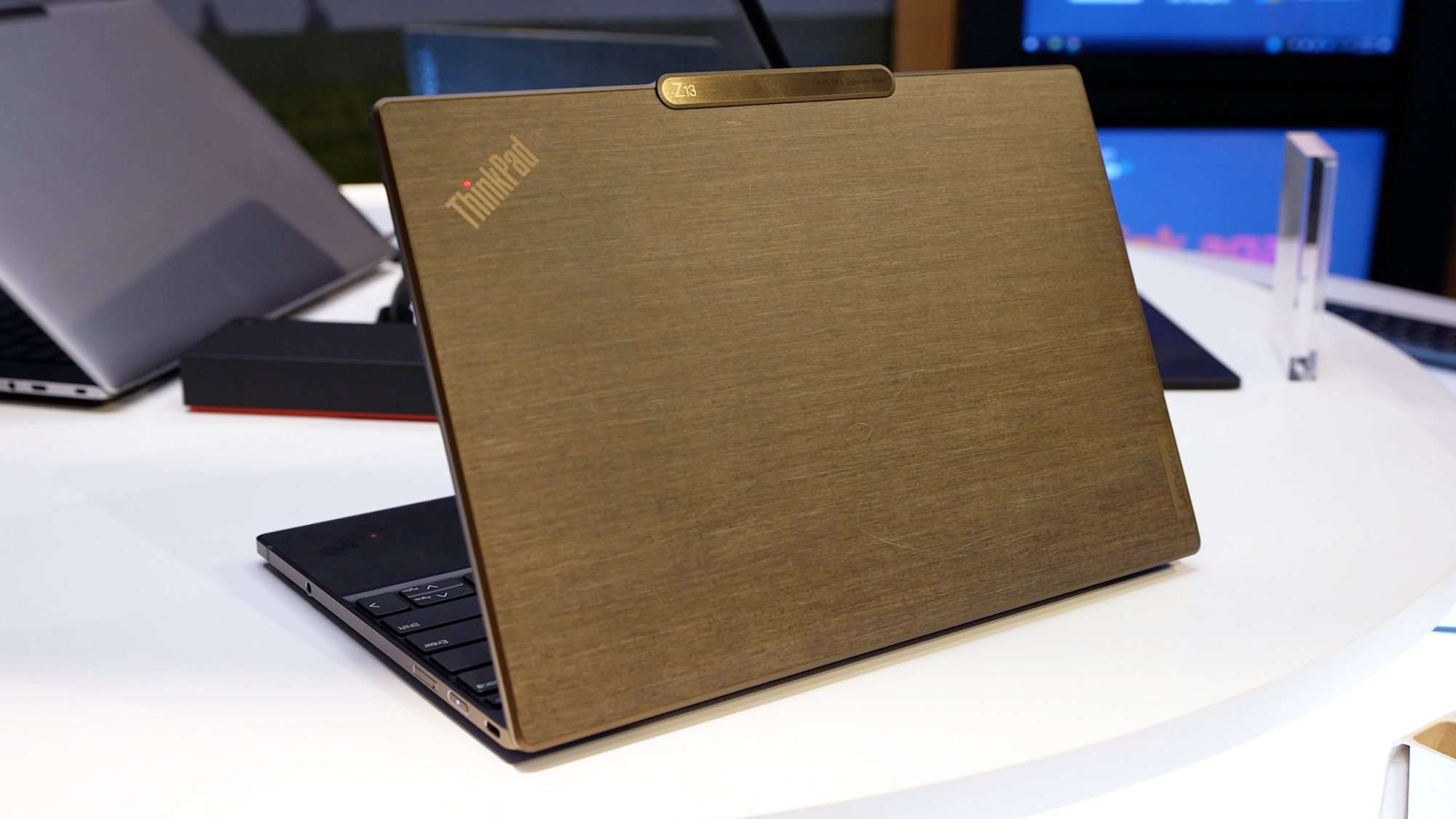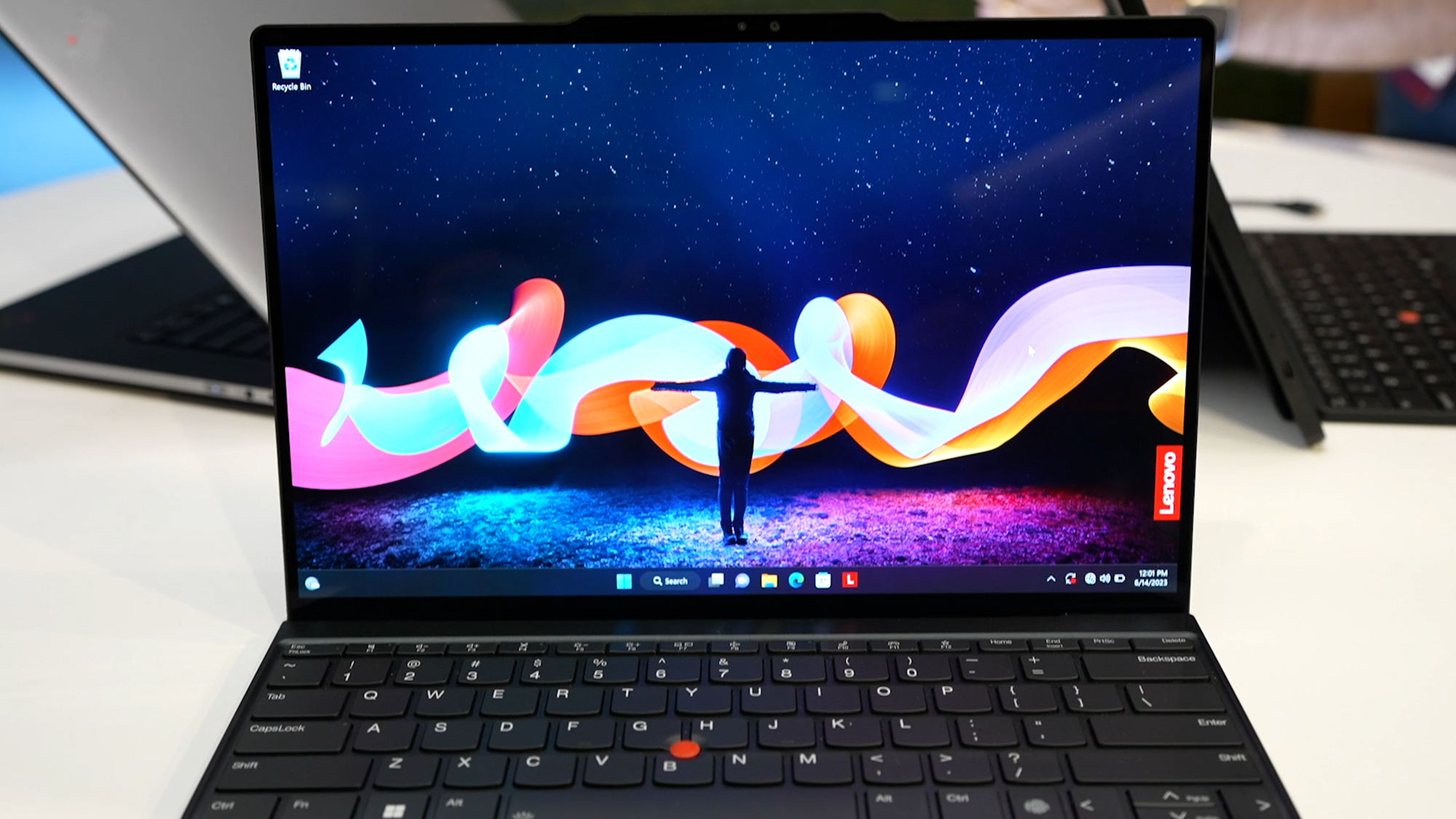I went hands-on with a ThinkPad made of flaxseeds — here's what to expect from a sustainably-built laptop
This is what I like to see

It’s no secret that we’re experiencing a serious climate crisis, and that consumer products are in some part to blame. Plastic and e-waste are major pollution sources that harm human and environmental health. While adopting impactful sustainable practices might not be every brand’s priority, I can argue that it should be — and the flaxseed-covered Lenovo ThinkPad Z13 Gen 2 is a good example of where companies can start.
I went hands-on with the Z13 during a visit to Lenovo’s headquarters in Raleigh, NC. The tour and interview opportunities centered around Lenovo’s sustainable design research and pollution management efforts. The company’s approach to improving its environmental impact is two-fold: build products out of recycled materials and make those products repairable, so they don’t need to be replaced as often.
The Z13 certainly embodies the first of those missions, donning a cover made out of discarded flaxseed fibers. Yes, like the flaxseeds I put in my smoothie every morning. The flaxseed fibers get pressed down and secured into panels with a bio-based resin. The panel is then attached to the laptop’s 75% recycled aluminum frame. Since each slate of flaxseed threads is uniquely bonded to create the wood-like pattern, no two units of the Z13 will look the same.
The Z13 dons a cover made out of discarded flaxseed fibers. Yes, like the flaxseeds I put in my smoothie every morning.
Most gadget chassis are made out of plastic, aluminum, or carbon fiber. While these materials may be repurposed if recovered, they’re still manmade to begin with. Replacing the amount of those materials needed in tech devices with natural elements, even if it’s just by some percentage, makes a difference.

What’s more, the Z13 ships in entirely plastic-free packaging. More and more companies have switched to cardboard and paper, with companies like Belkin, Sony and Apple ditching the plastic wrap to some extent if not entirely.
The Z13 takes it one step further with 100% biodegradable packaging made of bamboo and sugarcane. At one point during my trip, Tom Butler, the Executive Director of Worldwide Commercial Portfolio and Product Management for Lenovo, showed me the result of leaving the ThinkPad package outside in his home garden for several months. The dirt-covered and decaying box demonstrated how the package would break down if it ended up in, say, a landfill, but it will disintegrate even faster if properly composted.
Still a ThinkPad, but better for the future

Despite my focus on the ThinkPad Z13’s sustainability, it’s important to note that it performs like any other ThinkPad machine. It features a 13.3-inch 2.8K display with a claimed 400 nits brightness, plus it measures less than 14-millimeters thick, so it’s rather portable. It’s powered by the AMD Ryzen Pro 7000 and can be beefed up with a max 64GB RAM and 2TB SSD.
Get instant access to breaking news, the hottest reviews, great deals and helpful tips.
It also doesn’t sacrifice durability with its new materials. I saw the laptop dropped and stepped on several times without damage. Of course, Lenovo wouldn’t advise you to treat your laptop this way, but it should be able to withstand bumping around in your bag or the accidental fall.
If your laptop was to break in some way, Lenovo has a number of repair options that will let you replace damaged parts without replacing your entire machine. You could even do some of these fixes at home with the help of thorough instructional videos.
So, repairability paired with several points of sustainable design shows me that the Z13 is a device made with environment in mind. Though not every customer considers sustainability when shopping for a laptop, there’s a growing consciousness to hold companies accountable for their environmental impact.
If you ask me, that’s absolutely for the best.
More from Tom's Guide

Kate Kozuch is the managing editor of social and video at Tom’s Guide. She writes about smartwatches, TVs, audio devices, and some cooking appliances, too. Kate appears on Fox News to talk tech trends and runs the Tom's Guide TikTok account, which you should be following if you don't already. When she’s not filming tech videos, you can find her taking up a new sport, mastering the NYT Crossword or channeling her inner celebrity chef.
